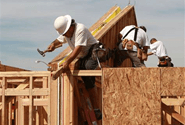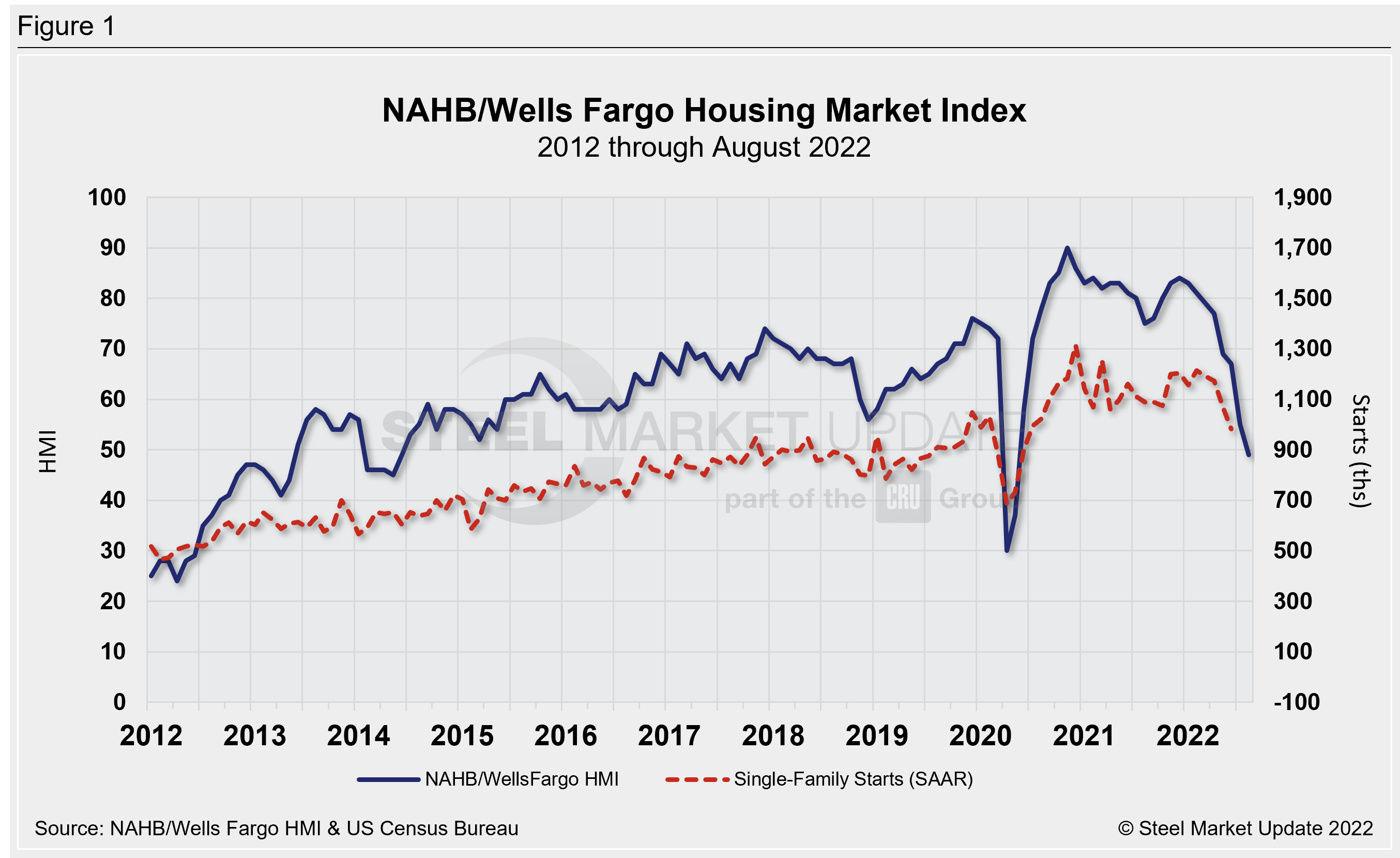Steel Markets

NAHB: Builder Confidence Underwater, Below Two-Year Low
Written by David Schollaert
August 16, 2022
Builder confidence hit a two-year low, tumbling for the eighth straight month in August and bringing the housing market to a crawl.
The National Association of Home Builders/Wells Fargo Housing Market Index (HMI) said that elevated interest rates, ongoing supply chain problems and high home prices continue to exacerbate housing affordability challenges.
August’s HMI reading—the gauge of builder confidence for newly-built single-family homes—fell six points to a measure of 49. It dropped below the key break-even rate of 50 for the first time since May 2020.
“Ongoing growth in construction costs and high mortgage rates continue to weaken market sentiment for single-family home builders,” said Jerry Konter, NAHB’s chairman as well as a builder and developer in Savannah, Ga. “And in a troubling sign that consumers are now sitting on the sidelines due to higher housing costs, the August buyer traffic number in our builder survey was 32, the lowest level since April 2014 with the exception of the spring of 2020 when the pandemic first hit.”

The NAHB/Wells Fargo HMI survey gauges builder perceptions of current single-family home sales and sales expectations for the next six months as “good,” “fair,” or “poor.” The survey also asks builders to rate traffic of prospective buyers as “high to very high,” “average,” or “low to very low.” Scores for each component are then used to calculate a seasonally adjusted index where any number over 50 indicates that more builders view conditions as good than poor.
All three major HMI indices posted major losses in August, all falling to their lowest levels since May 2020, the report said. The HMI index gauging current sales conditions fell seven points to 57, and the gauge measuring sales expectations in the next six months slipped two points to 47. The component charting traffic of prospective buyers posted a five-point decline to 32.
Roughly one in five (19%) home builders in the HMI survey reported reducing prices in the past month to increase sales or limit cancelations, the report said. The median price reduction was 5% for those reporting using such incentives. Meanwhile, 69% of builders reported higher interest rates as the reason behind falling housing demand, the top impact cited in the survey.
“Tighter monetary policy from the Federal Reserve and persistently elevated construction costs have brought on a housing recession,” said NAHB chief economist Robert Dietz. “The total volume of single-family starts will post a decline in 2022, the first such decrease since 2011. However, as signs grow that the rate of inflation is near peaking, long-term interest rates have stabilized, which will provide some stability for the demand-side of the market in the coming months.”
Looking at the three-month moving averages for regional HMI scores, the Northeast fell nine points to 56, and the Midwest dropped three points to 49. The South fell seven points to 63 and the West posted an 11-point decline to 51.
By David Schollaert, David@SteelMarketUpdate.com

David Schollaert
Read more from David SchollaertLatest in Steel Markets

CMC looks beyond Arizona micro-mill woes to long-term viability of construction mart
Despite the economic and geopolitical upheaval of the last five years, CMC President and CEO Peter Matt points out that the construction market has been an essential element of the way forward.

US importers face stricter rules under revamped S232 tariffs
“CBP expects full compliance from the trade community for accurate reporting and payment of the additional duties. CBP will take enforcement action on non-compliance," the agency said in a March 7 bulletin.

Steel exports rebound in January
US steel exports recovered to a five-month high in January after having fallen to a two-year low in December. This growth follows four consecutive months of declining exports.

Construction spending drops marginally in January
Construction spending edged down slightly in January, slipping for the first time in four months. The US Census Bureau estimated spending at a seasonally adjusted annual rate of $2,196 billion in January, down 0.2% from December’s downward revised rate. The January figure is 3.3% higher than a year ago. January’s result, despite the slight erosion, […]

HVAC equipment shipments slow in December but strong annually
Shipments of heating and cooling equipment in the US fell to an 11-month low in December, according to the latest data released by the Air-Conditioning, Heating, and Refrigeration Institute (AHRI).
